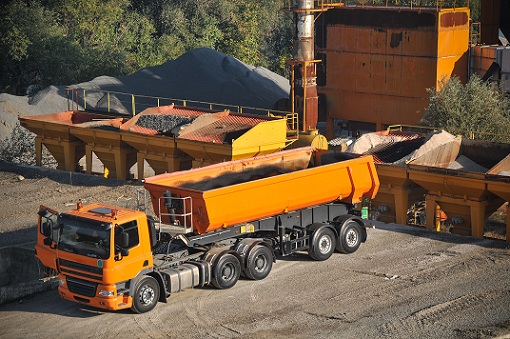Due to its qualities bitumen is widely used in building materials, in particular, materials for roads building and repairs.
Usually bitumen is used in a liquid state. It is heated to 100-200ºС and then mixed with chemically inert compounds. The resulted substance is shipped and packed in a hot state. This is the main disadvantage of bitumen application. Bitumen becomes solid when it cools down.
The alternative method to get liquid bitumen is to dilute it with kerosene (paraffin oils). Bitumen surface gets finally solid after kerosene evaporates. But this method is not the best choice.
At present the best solution for bitumen transition to liquid phase is bitumen-in-water dispersion. As the result we get emulsified asphalt. This dispersion system can include other cold inert compounds as well.
Strength of construction materials produced on the basis of such bitumen is provided by means of water evaporation and asphalt paste sedimentation. The advantages of the given technique are:
- safety (low heat not causing fires or burns or bad vapours);
- energy efficiency;
- operational from early spring till late autumn;
- high productivity.
This kind of bitumen was invented by French scientists. The first practical application of this substance dates back to 1920th.
Emulsified bitumen discovery helped with many difficulties that arises when using bitumen: high viscosity and heavy expenditure, atmospheric pollution and power consumption during heating.
Emulsified asphalt concept
Emulsified bitumen is a highly dispersed substance consisting of bitumen and water with added special emulsifier. This emulsifier helps the emulsion maintain its stability.
Emulsified asphalt has low viscosity. This allows using emulsified bitumen as film, membrane or cementing (bonding) material. Due to these qualities, emulsified bitumen can be used both on macadam and asphaltic surfaces.
Emulsified bitumen is characterized by brown color and creamy consistency when it contains 40 to 80% of bitumen. The diameter of bitumen drops is 0.1 to 20 µm.

Emulsified asphalt production
In general the production scheme of emulsified bitumen uses basic or modified bitumen, water (with minimum content of organic and mineral impurities) and emulsifiers (substances of amine class). Acid is necessary for emulsified bitumen production. The main function of acid is to transform emulsifiers into salts which are then dissolved in dispersion medium.
Bitumen is dispersed under the influence of mechanical and physicochemical energy. Mechanical influence is provided by a colloid mill and physical-and-chemical processing – by emulsifier. Mechanical energy crushes bitumen into tiny particles and physicochemical energy – reduces tension between hydrocarbon and water phase, and forms protecting film around bitumen particles.
Emulsified asphalt can be obtained with the help of bitumen-emulsion plants of cyclic and continuous modes. The following components are fed into the tank for water mixture:
- hot water;
- emulsifier;
- chemical additives.
After mixing a water mixture, bitumen is supplied into a colloid mill. Sometimes a dissolver is added too.
SBS-polymer or latex can be used as an additive in emulsified asphalt. Because latex can cause clogging inside pipes and pumps – a special dosage equipment is used for it.
Production process
Colloidal system crushes bitumen into tiny drops. The difficulty of this process is caused by bitumen inner cohesion, viscosity and surface tension. Even after crush grinding bitumen drops can interflow and join into bigger forms. In order to get a greater separation and stability of tiny particles, mechanic energy is used.
The size of bitumen drops depends on:
- engine speed;
- time of processing inside a colloid mill;
- rotor-stator gap;
- temperature;
- type of emulsifier.
Prior to supplying bitumen into a colloid mill it is necessary to reduce its viscosity (not exceeding 500 cSt) by heating it to 110-160ºС. Water mixture is heated as well to 30-70ºС. During production the temperature should not get higher than 100ºС (with recommended temperature 85-95ºС). The gap between temperatures of emulsifier solution and bitumen should be as little as possible. Bitumen temperature should be high, otherwise it will not get pumped over.
GlobeCore offers bitumen plants of different productive capacity. UVB-1 plants are used for emulsified bitumen production on the basis of anionic and cationic emulsifiers. Emulsified bitumen is produced on this equipment in a semi-automatic mode.
GlobeCore specialists can do all the adjusting and start-up procedures and give operating and safety maintenance instructions.
